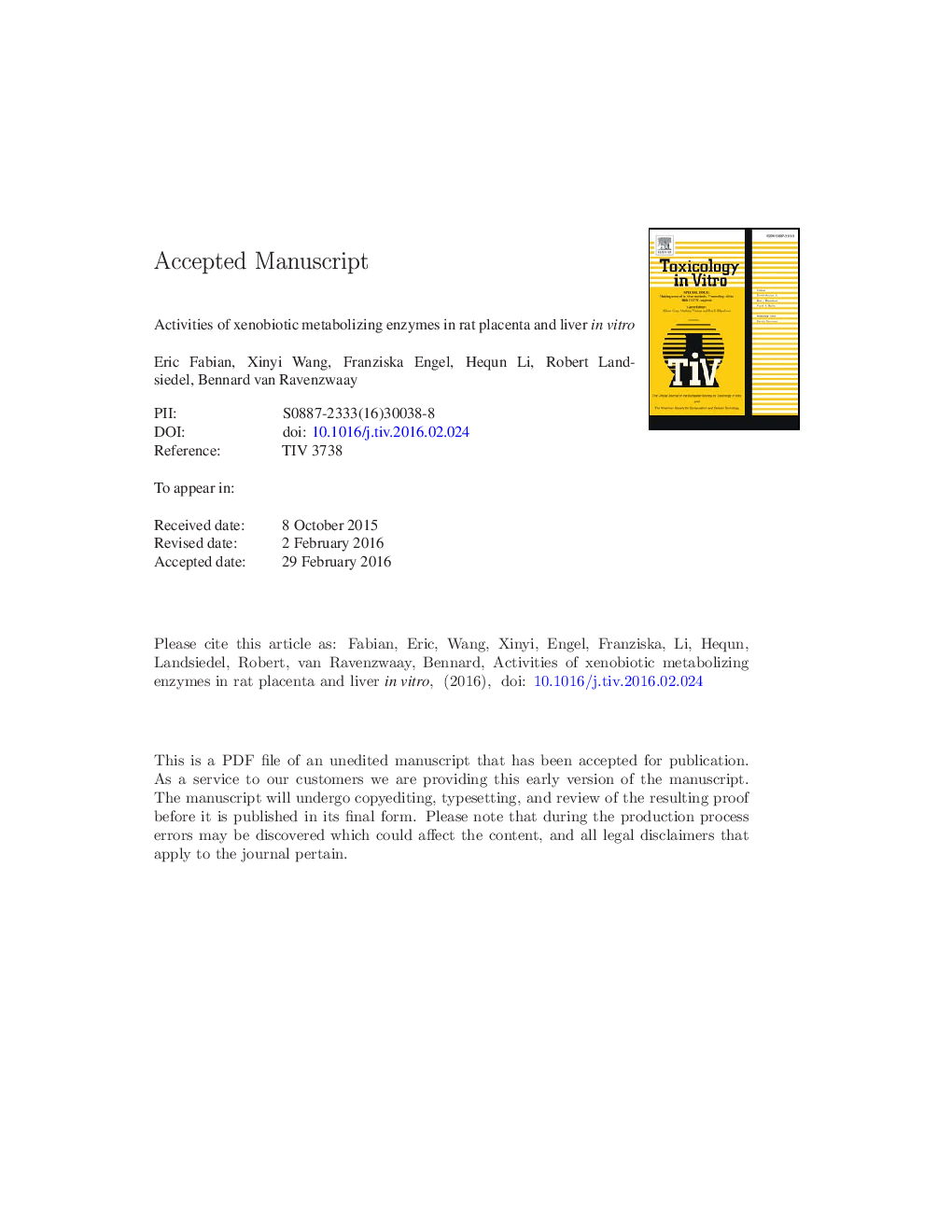| Article ID | Journal | Published Year | Pages | File Type |
|---|---|---|---|---|
| 5861024 | Toxicology in Vitro | 2016 | 24 Pages |
Abstract
In order to assess whether the placental metabolism of xenobiotic compounds should be taken into consideration for physiologically-based toxicokinetic (PBTK) modelling, the activities of seven phase I and phase II enzymes have been quantified in the 18-day placenta of untreated Wistar rats. To determine their relative contribution, these activities were compared to those of untreated adult male rat liver, using commonly accepted assays. The enzymes comprised cytochrome P450 (CYP), flavin-containing monooxygenase (FMO), alcohol dehydrogenase (ADH), aldehyde dehydrogenase (ALDH), esterase, UDP-glucuronosyltransferase (UGT), and glutathione S-transferase (GST). In contrast to liver, no activities were measurable for 7-ethylresorufin-O-dealkylase (CYP1A), 7-pentylresorufin-O-dealkylase (CYP2B), 7-benzylresorufin-O-dealkylase (CYP2B, 2C and 3 A), UGT1, UGT2 and GST in placenta, indicating that the placental activity of these enzymes was well below their hepatic activity. Low activities in placenta were determined for FMO (4%), and esterase (8%), whereas the activity of placental ADH and ALDH accounted for 35% and 40% of the hepatic activities, respectively. In support of the negligible placental CYP activity, testosterone and six model azole fungicides, which were readily metabolized by rat hepatic microsomes, failed to exhibit any metabolic turnover with rat placental microsomes. Hence, with the possible exception of ADH and ALDH, the activities of xenobiotic-metabolizing enzymes in rat placenta are too low to warrant consideration in PBTK modelling.
Keywords
ALDH4-HydroxybiphenylPRODPBTKLOQUDPGA4-methylumbelliferoneMUFCyPFMOUGTGSTADHHBPERODUDP-glucuronosyl transferasealdehyde dehydrogenaseXenobiotic metabolizing enzymesUDP-glucuronic acidAlcohol dehydrogenaseBRODBenzydamineRat placentaLOD یا Limit of detectionDDTdithiothreitolCytochrome P450limit of quantificationlimit of detectionFlavin-containing monooxygenaseRat liverglutathione S-transferase
Related Topics
Life Sciences
Environmental Science
Health, Toxicology and Mutagenesis
Authors
Eric Fabian, Xinyi Wang, Franziska Engel, Hequn Li, Robert Landsiedel, Bennard van Ravenzwaay,
